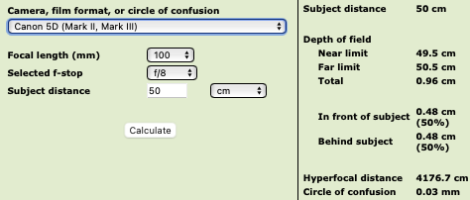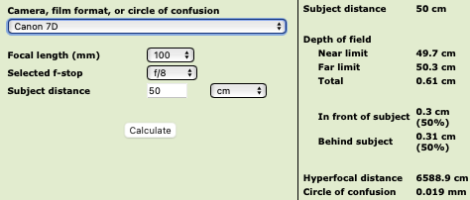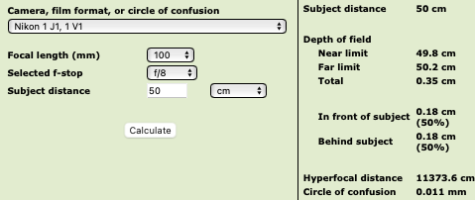It's ok if you don't understand the concept, even though it's called the circle of confusion for reasons that have nothing to do with people being confused about it, many people are.
DoF calculators take CoC into account for their calculations. Here's an example from one such
calculator, a shot at 100mm f/4 with a subject distance of 50 cm. If you change only the sensor size, you see that the FF sensor has a deeper DoF than the APS-C sensor, because the smaller sensor has a smaller CoC, so the resulting image must be enlarged more for final viewing (again, for comparison purposes we assume a fixed output size and viewing distance).
View attachment 200621View attachment 200622
If you pick an even smaller sensor, like the 1" sensor in the Nikon 1, the DoF gets even shallower, because a deeper crop means even greater enlargement is needed.
View attachment 200623




